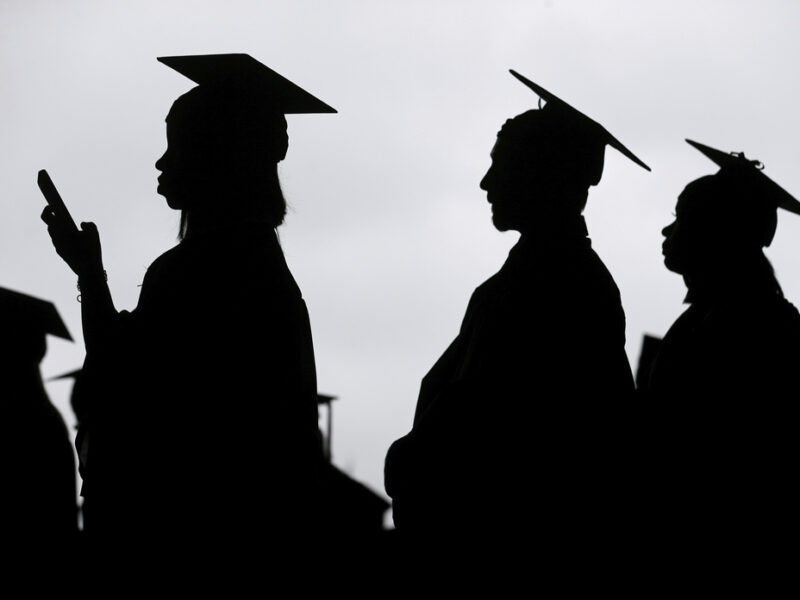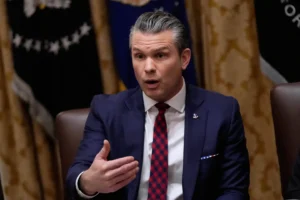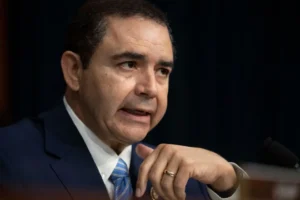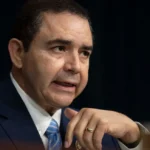Wyoming Senators Join GOP Effort to Roll Back Biden’s Latest Student Loan Repayment Plan
After Supreme Court setback, Biden administration pursues new approach to debt relief
- Published In: Politics
- Last Updated: Sep 08, 2023

Wyoming's Republican senators signed onto an effort to overturn President Biden's latest program addressing student loan debt. (AP Photo/Seth Wenig, File)
By Jacob Gardenswartz
Special to the Wyoming Truth
This story has been updated with comments from Sen. John Barrasso and Sen. Cynthia Lummis as of September 8, 2023 at 1:30 p.m. MT.
WASHINGTON — The Biden administration and student loan borrowers who were dealt a significant defeat earlier this summer with the U.S. Supreme Court’s decision to overturn a debt forgiveness plan may be in for even more bad news, as a coalition of Republican lawmakers this week announced a new effort to roll back the president’s more modest student debt policy.
Seventeen GOP senators — among them Sens. John Barrasso (R-Wyo.) and Cynthia Lummis (R-Wyo.) — have signed onto a Congressional Review Act (CRA) resolution disapproving of the Department of Education’s new loan repayment policy, the so-called “Saving on A Valuable Education (SAVE)” income-driven repayment plan. Should the measure win a simple majority vote of the Senate, and a companion measure pass the House, the administration would be forced to rescind the rule immediately and return to its previous loan repayment program.
On Sept. 1, interest on millions of Americans’ student loans began accumulating once again after a years-long pause resulting from the COVID-19 pandemic emergency. Loan payments for those borrowers are set to resume next month.
But if allowed to stand, the SAVE plan could provide significant financial assistance to borrowers by lowering their monthly payments — in some cases by upwards of $1,000 a year, according to federal officials.
“From Day One of this Administration, President Biden has focused on reducing the burden of student loan debt on working families, and we are not stopping now,” Secretary of Education Miguel Cordona said in a statement touting the program.
The SAVE plan is being rolled out in two parts. This summer, approved applicants who make less than $15 per hour will not be required to make any monthly payments, while those earning more than that will have their monthly contribution reduced according to their household income.
Additionally, the plan is structured such that borrowers who stay up-to-date on payments will never see their overall balance increase due to unpaid interest, which will help to prevent a situation whereby borrowers are never actually able to pay off the loan’s principal.
And beginning in 2024, the amount that qualified borrowers owe each month will effectively be cut in half: from 10% of their discretionary income to 5%. Borrowers with outstanding balances less than $12,00 who’ve stayed current with their payments will also be able to have their balance forgiven after 10 years, rather than the current policy of 20.
For the GOP senators behind the CRA resolution, however, the new plan amounts to little more than a government handout.
“Once again, Biden’s newest student loan scheme only shifts the burden from those who chose to take out loans to those who decided not to go to college, paid their way, or already responsibly paid off their loans,” Sen. Bill Cassidy (R-La.), the bill’s lead sponsor, said in a statement. “Our resolution protects the 87 percent of Americans who don’t have student debt and will be forced to shoulder the burden of the President’s irresponsible and unfair policy.”
“President Biden continues to push his unconstitutional student loan forgiveness scheme. Even after the Supreme Court ruled against the president, he is still trying to force billions of dollars of debt onto hardworking taxpayers,” Barrasso added in a statement on Friday.
“People in Wyoming who did not pursue a college degree, paid back their own loans or worked hard to pay for their education should not be responsible for someone else’s voluntary financial decisions,” echoed Lummis.
Biden administration officials ‘confident’ plan will stand
Upwards of four million Americans have already signed up for the new SAVE plan, according to federal figures released this week. Many of those individuals were automatically transitioned from the previous federal repayment program, known as “Revised Pay As You Earn” (REPAYE), though officials said over a million new applicants had enrolled in SAVE since the application launched in late July.
Wyoming had the fewest enrollees of any state with just 5,100, though the state is also the least populated in the country. According to a recent report from the Education Data Initiative, Wyoming student borrowers hold an average of $31,250 each in debt.
Before it was struck down, some 50,000 Wyomingites had stood to benefit from Biden’s previous loan forgiveness plan, which would have forgiven up to $10,000 of student debt for individuals earning less than $125,000 per year and $20,000 for low-income families who received Pell grants.
But Wyoming’s political leaders were among the foremost opponents of the policy: Lummis called it “morally wrong” and Rep. Harriet Hageman (R-Wyo.) claimed it “only passe[d] along the cost of a degree to others that didn’t take out the loan.” After the Supreme Court vacated the plan, Barrasso celebrated the decision as a “victory for every American who played by the rules.”
On a call with reporters announcing the SAVE enrollment data before the Republican lawmakers announced their intentions to overturn the policy, federal officials expressed confidence that the SAVE plan will withhold legal scrutiny — and teased even further actions to come.
“We’re highly confident that this plan is legally authorized,” Bharat Ramamurti, deputy director of the National Economic Council, told the Wyoming Truth.
“Congress has given the Department [of Education] the authority to develop new repayment plans — it’s one that we’ve used a number of times in the past and… we’re quite confident in our legal authority to create this plan,” echoed Education Dept. under secretary James Kvaal on the call.
Pressed about why the administration initially pursued the forgiveness policy instead of the repayment plan, officials refuted the suggestion that SAVE served as a replacement for the loan forgiveness program. Instead, they insisted both the debt relief and repayment programs could coexist together.
“It was not a decision of choosing one or the other,” Ramamurti said. “We pursued both because they serve different purposes.” He went on to say the administration continues to explore alternate legal pathways to providing debt relief to borrowers “as quickly as possible,” though officials declined to elaborate further.
As for Republicans’ disapproval resolution, its future remains unclear. Democrats maintain a narrow majority in the Senate, so passing the measure may be difficult.
In the meantime, borrowers interested in applying to the SAVE program can do so online at studentaid.gov/save.













